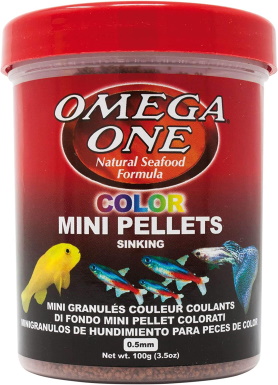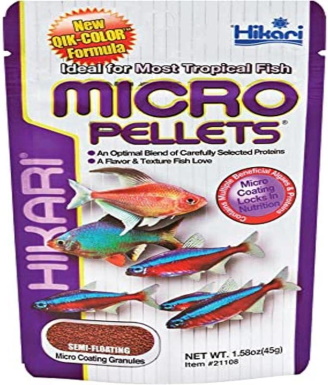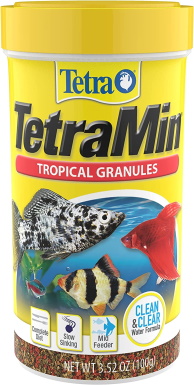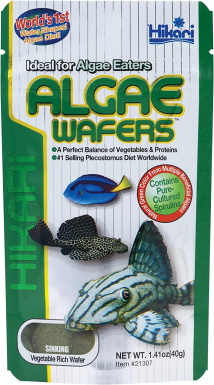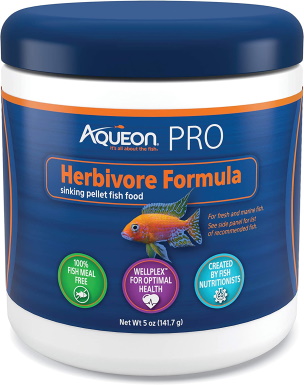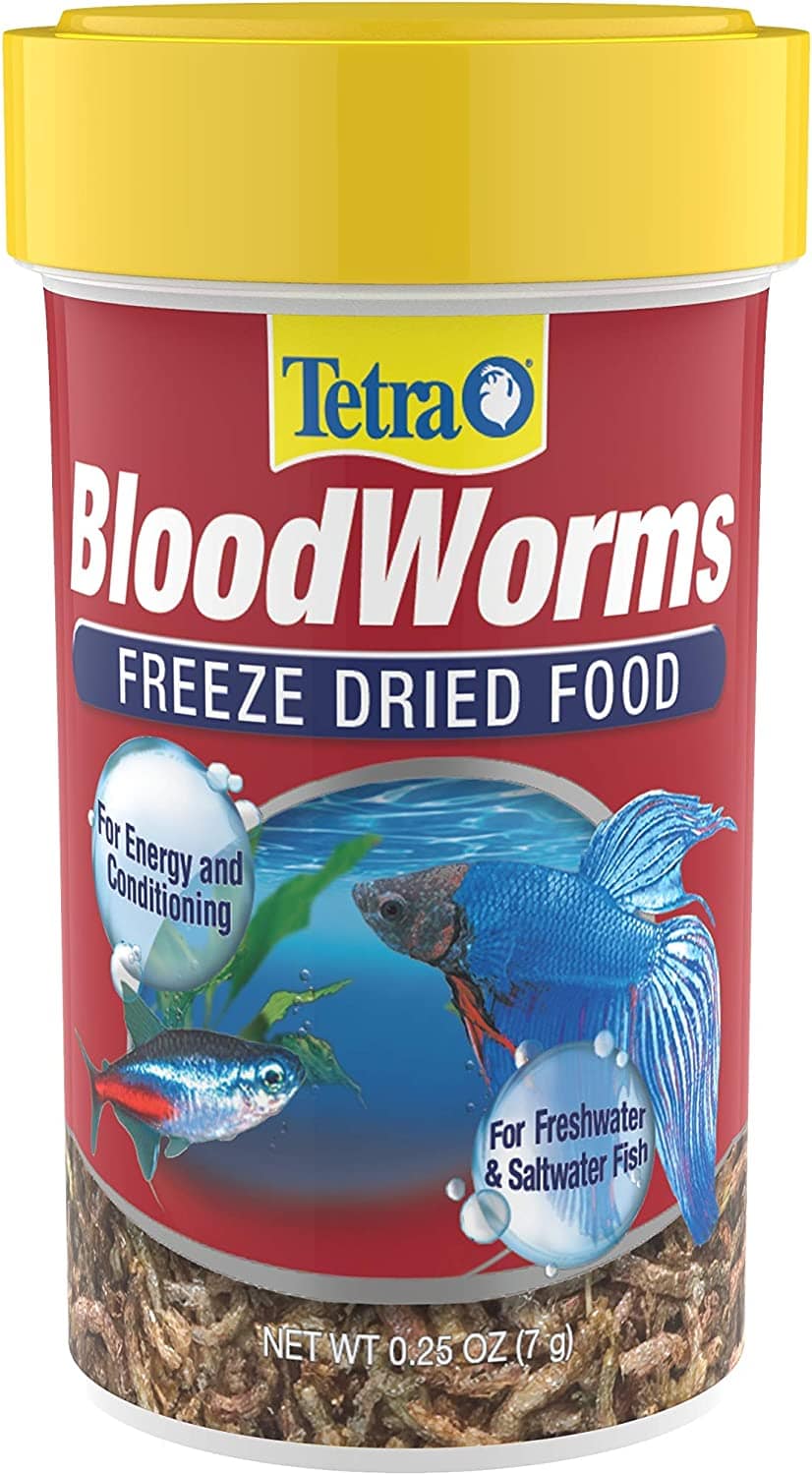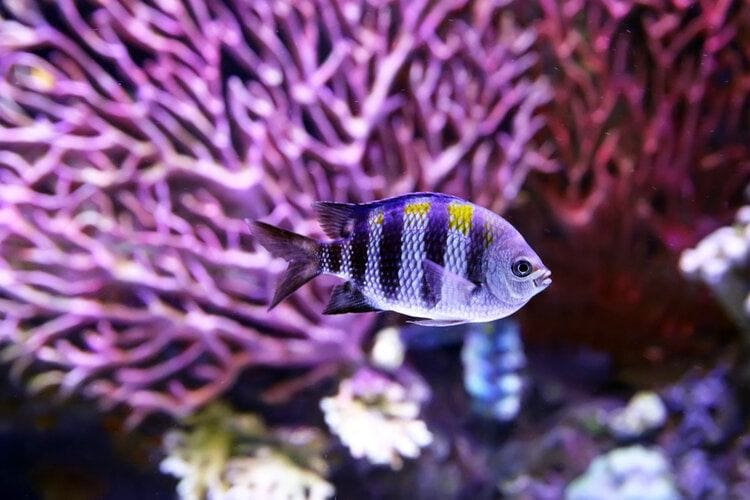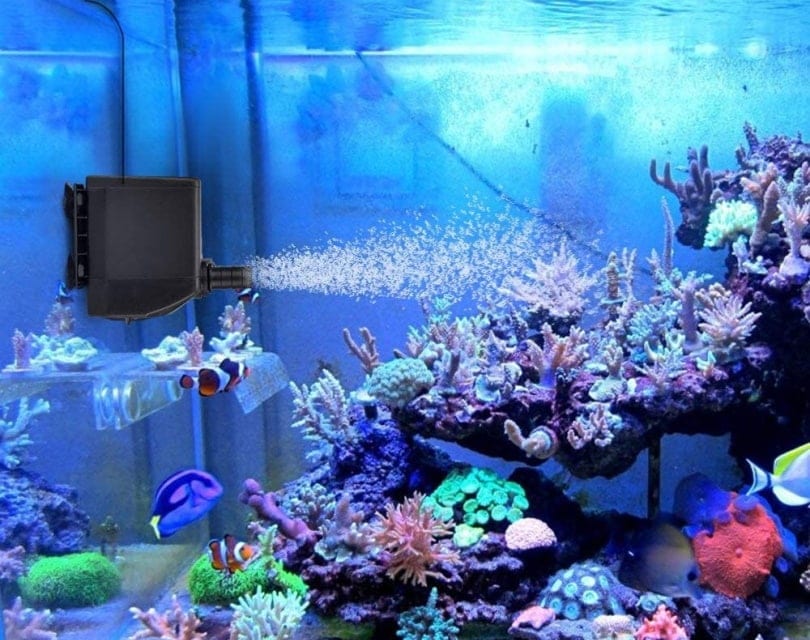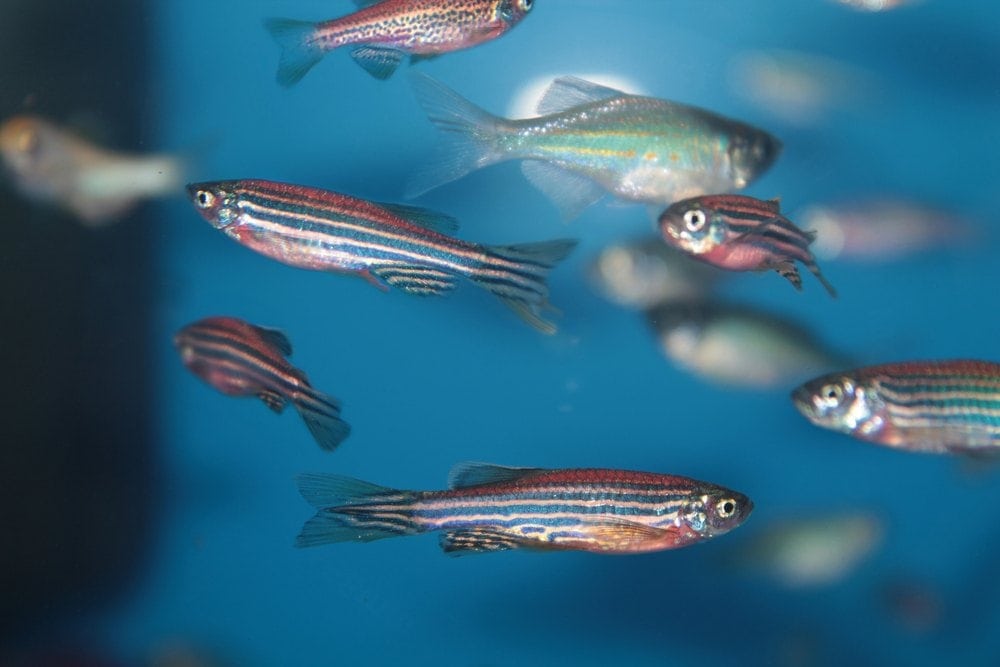6 Best Fish Food For Mollies in 2024 – Reviews & Top Picks
Updated on
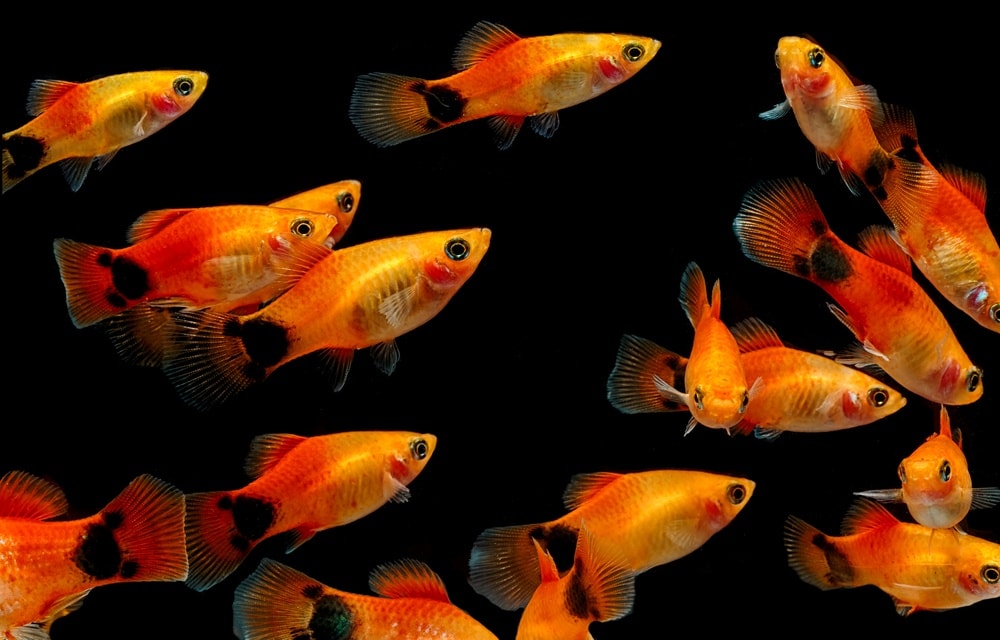
Mollies are a popular tropical freshwater fish, known as livebearers. They come in a range of different colors and tail shapes, and they all eat an omnivorous diet. Since mollies generally eat more plant matter in their wild diet and are considered to be “algae-eating fish”, they require more herbivorous foods in their diet, rather than live foods.
Mollies will benefit from most commercial pellet or granule foods that are small enough to fit into their mouth, but they can also benefit from protein-rich foods and algae wafers. It is important to ensure that your molly is getting a balanced diet, rich in the necessary vitamins and minerals they need to be healthy.
Let’s look at some of the best fish foods you can give your molly fish.
A Quick Comparison of Our Favorites of 2024
| Rating | Image | Product | Details | |
|---|---|---|---|---|

|
Omega One Mini Color Pellets |
|
Check Price | |

|
Hikari Micro Pellets |
|
Check Price | |

|
TetraMin Tropical Granules |
|
Check Price | |

|
Hikari Mini Algae Wafers |
|
Check Price | |

|
Aqueon Pro Herbivore Formula |
|
Check Price |
The 6 Best Fish Foods for Mollies
1. Omega One Mini Color Pellets – Best Overall
These slow-sinking mini pellets are great if you want to boost your molly’s coloration. They contain high levels of beta carotenes and salmon skin, which can increase the coloration of orange or red mollies, and they also contain essential fatty acids to support a molly fish’s immune system.
The pellets themselves are small enough for mollies to eat, and they do not cloud the water easily because they contain less starch. It is a natural seafood formula, and the pellets float on the surface for a few minutes before they start to sink to the bottom, which can make your molly more interested in eating them.
- Easy for mollies to eat
- Balanced formula
- Does not foul the water easily due to lower starch levels
- Color-enhancing formula
- It may leave an oily residue in the water
2. Hikari Micro Pellets – Best Value
Hikari is a great brand of fish food, especially for live-bearing fish like mollies. The Hikari brand contains a range of staple foods that you can feed to mollie fish. This specific formula contains veggies, marine proteins, and a balance of spirulina and krill for color enhancement in fish, which can be beneficial for mollie’s coloration.
This fish food does not dissolve quickly in water, which gives your molly more time to eat the food without the nutrition being lost in the water. Hikari has another food called algae wafers that are also beneficial for mollies.
- Reduces water clouding
- Contains a balance between spirulina and krill for color enhancement
- Highly nutritious as a staple food
- Too small for mollies to easily forage for in the substrate
3. TetraMin Tropical Granules – Premium Choice
This fish food is a good choice for molly fish, as it is not only affordable but also contains a balance of nutrients and minerals that makes it a practical staple food. These granules are small enough for mollies to eat easily, and they sink to the bottom of the aquarium slowly.
This formula from the Tetra brand contains added vitamin C and other beneficial vitamins that make it suitable as a staple granular diet for mollies. The only downside to this food is that it dissolves quickly in the water, which can cause water clouding issues.
- Good as a staple diet for mollies
- Added vitamins and minerals
- Easy for mollies to eat
- Dissolves quickly in the water
4. Hikari Mini Algae Wafers
Since mollies are mostly herbivorous fish, even though they eat an omnivorous diet, they will benefit from algae-based food, such as algae wafers. These small algae wafers contain a blend of highly digestible algae and can be fed alongside a staple pellet or granular food. The wafers sink to the bottom of the tank, where mollies can nibble at one of their favorite snacks in the wild—algae.
- Ideal for algae-eating fish like mollies
- High vegetable protein content
- Easily digestible formula
- Breaks apart after it soaks in water
5. Aqueon Pro Herbivore Formula
This food contains a blend of algae and plant matter for algae-eating fish, and it can benefit mollies who enjoy eating algae and other aquatic plants. This food can be fed as a staple diet; however, you will need to supplement it with foods like bloodworms, shrimp, or tubifex worms, so that your molly receives more protein.
It has been formulated for fish that have a longer digestive system designed to eat a variety of plant matter, which makes it a great food to add to your molly’s diet for its digestive benefits.
- Aids in digestive health
- Mimics what algae-eating fish would eat in the wild
- Helps prevent digestive issues in mollies
- Needs to be fed a protein supplement
6. Tetra Freeze-Dried Bloodworms
This is a protein-rich treat that you can feed to mollies on occasion to supplement their diet. It consists of freeze-dried bloodworms and has a high protein content, which makes it a good food to feed alongside other staple foods or algae wafers to increase your molly’s protein intake.
This food is especially beneficial to molly fry or pregnant mollies. The high protein content is also great for growing mollies from the fry tank to the adult tank, but it should only be given up to three times a week.
- High protein content
- Great-tasting snack for mollies
- Energy-boosting
- Should only be fed alongside a staple diet three times a week
What Do Mollies Eat?
Mollies are naturally omnivorous fish, but they consume a lot of algae and plants in their wild diet. Algae is a favorite with mollies, and they can be seen nibbling at algae growing in the aquarium throughout the day.
Mollies eat a mixture of algae, plants, and invertebrates in their diet, as they are not very picky. However, it is important to provide them with pelleted or granular food as a staple diet to ensure that they are getting all the vitamins and minerals they need in an aquarium.
You can supplement your molly’s diet regularly with worms, shrimp, or algae wafers to ensure their diet is balanced.
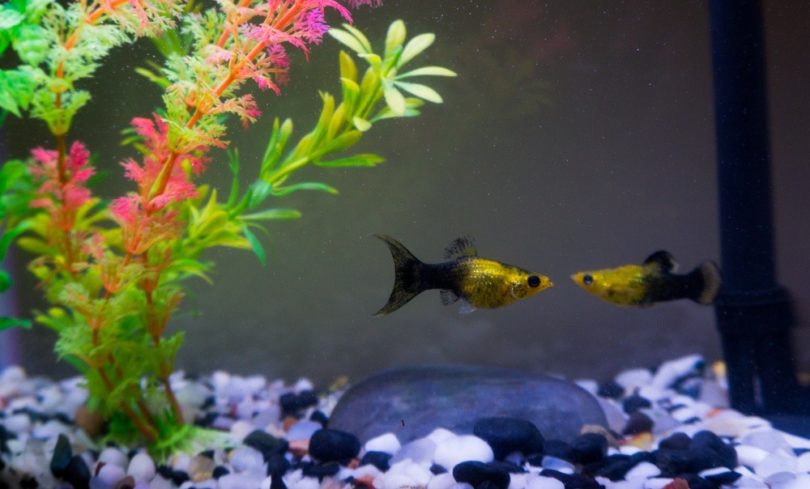
Should Mollies Eat Pellets or Flake Food?
Mollies can eat both pelleted and flake foods, but pelleted foods are generally better for most fish. This is because flake foods dissolve easily in the water. After all, they are so thin and are not protected by micro-coating, whereas pellets do not lose much nutrition as they dissolve slowly in the water.
This will allow your molly to eat most of the nutrition from their food, without you having to worry if some of the nutrition was lost as it dissolved. Granular foods and algae wafers are also great for mollies because they have a similar consistency to pellets.
Conclusion
Mollies can eat a variety of different tropical fish foods, but some of the best foods for mollies contain algae as one of the main ingredients. You should ensure that the food you are feeding to your molly contains a blend of essential vitamins and minerals so that they can maintain a healthy coloration, immune system, and weight.
Our top choice is the slow-sinking mini pellets from Omega One, and are great if you want to boost your molly’s coloration. Hikari is a great choice of food if you’re looking for good value. Once you have chosen a good staple food for your molly, you can look into supplements to feed them occasionally, such as algae wafers or bloodworms.
Featured Image Credit to: Praisaeng, Shutterstock




